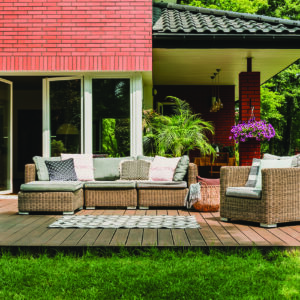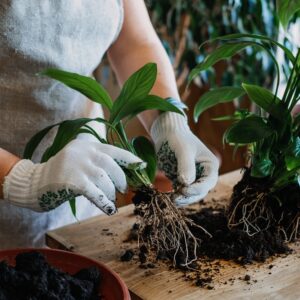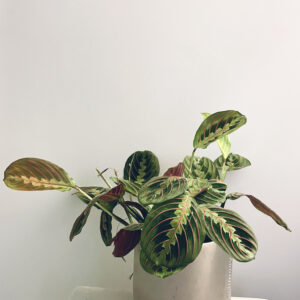
Just when we thought it was safe to start outdoor planting, southern Ontario’s unpredictable weather struck again and changed our long weekend plans. Who knows when we’ll be able to start now but in the meantime, how strong is your humidifier game?
Ask any semi-intense indoor plant parent whether or not you should have humidifiers running in your home and they will likely say, Yes, and tell you all about their in-home setup. Whether running a humidifier makes your plants any happier than without running one depends on the climate of your home, the type of humidifier you have and the type of plants you’re growing.
First off, what is a humidifier? Most of us are more familiar with dehumidifiers, an appliance that takes moisture out of the air when it is too humid. Humidifiers add moisture to the air when it is too dry. Generally, people use humidifiers in the wintertime to combat the dryness of winter air, but if your home is still dry in the summer, humidifiers can come in handy.

Ultrasonic vs. evaporative
Most consumer humidifiers are either Ultrasonic or Evaporative. Ultrasonic humidifiers do not need wicks and are nearly silent, according to aircareproducts.com. But evaporative models are better for larger spaces and produce more humidity. If you just want added humidity in your plant room, then a single room evaporative or ultrasonic model is a good choice.
Ultrasonic humidifiers expel an ultra-fine mist into the air through high-frequency sound vibrations of two inner ceramic plates. After the tiny water droplets are released into the room, they evaporate. As they continue to release into the room, they increase the humidity in the space.
Evaporative humidifiers work quite differently from ultrasonic humidifiers. They rely on evaporation to increase the moisture content in a room.
“When you place a large bowl of water in a room, the water will evaporate and make the room more humid. Evaporative humidifiers speed up this natural process of evaporation by using a fan and a wick filter. The fan in the humidifier pulls in air and blows it through the wick filter at the humidifier’s base. This causes the water to evaporate and turn into water vapour. The water vapour is then pushed into the room to increase its humidity,” says bobvila.com.
Do they help?
Most plants will benefit from extra humidity, especially if you are trying to grow any sort of tropical plant indoors. By increasing the humidity in your home, your plants are likelier to grow better and have lusher leaves and thicker foliage.
Some plants aren’t moisture-loving, like the snake plant or jade plant. These kinds of plants are easy to grow and tolerate dry air. A humidifier won’t be a necessity in your home for these guys, but it wouldn’t cause them any harm either.
On the other hand, while some tropical plants will survive without a humidifier, some need very high levels of humidity in the air to grow new leaves, keep their bright colours and thrive. Some of these plants and their favourite humidity levels are:

Alocasia: With its striking arrowhead leaves and bold patterning, Alocasia is the happiest at 70 per cent humidity level.
Orchid: Orchids love high humidity levels but don’t like being watered much, so they are good plants to grow if you can keep them humid but not wet. Humidity level: 50 per cent to 70 per cent.
Calathea: Ideally, calathea prefers humidity levels between 50 per cent to 60 per cent. Don’t let them dry out.
Monstera: Their favourite humidity levels are between 60 per cent to 80 per cent, with six hours of bright and indirect sunlight throughout the day.
Got a green tip to share with us or something plant-ey you would like us to investigate? Send your ideas to Jace at aestheticSnail@outlook.com.










